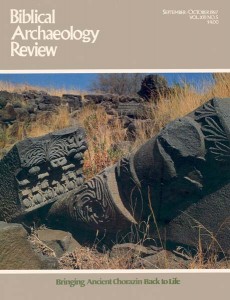Pharaoh in Memphis—Tennessee, That Is
What’s in a name? Suppose Memphis, Tennessee, had been called Vienna, Tennessee, or Lachish, Tennessee?
Things would have been very different. For one, the “Ramesses the Great” exhibit would never have come to Memphis. This stunning collection of over 70 pieces from the Egyptian Museum in Cairo includes everything from a 19-pound gold necklace to colorful funerary scenes painted on a Canopic chest.
The star of the show, however, is a colossal statue of Ramesses himself, 27 ½ feet tall and weighing 47 tons. For thousands of years, it had lain in pieces at Memphis on the Nile, the traditional capital of Egypt. At a cost of more than $100,000, the statue was restored and brought to Memphis on the Mississippi for this exhibit.
The four-and-a-half-month exhibit, which opened April 15, attracted advance sales of over 400,000. By the time the show closes on August 31, probably more than 500,000 people will have seen it.
Scholars too were attracted. Memphis State University’s Institute of Egyptian Art and Archaeology—which was itself created because the city on the Mississippi happened to be called Memphis—held a series of programs. The American Research Center of Egypt held its annual meeting in Memphis (Tennessee, that is).
And the Near East Archaeological Society (NEAS) mounted a three-day colloquium of scholarly talks entitled “Who Was the Pharaoh of the Exodus?”
Already a library member? Log in here.
Institution user? Log in with your IP address.

